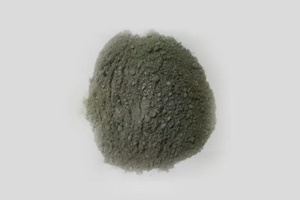Different types of binders have different mechanisms for combining bulk refractory raw materials. The main binding mechanisms of common refractory binders are as follows:
- Hydration
The hydration combination is the combination of the hydration product generated by the hydration reaction between the binding agent and water at room temperature.
Cement binders generally have a hydration bonding mechanism. For example, calcium aluminate cement undergoes hydrolysis and hydration reaction when exposed to water to form hexagonal flakes or needles and cubic granular crystals and alumina gels, forming a cohesive-crystal network. Produce a combination. Generally, the refractory castable for high temperature is combined with aluminate cement, and the refractory castable for low temperature is combined with Portland cement.
- Chemical combination
Chemical bonding is through the reaction between the bonding agent and the hardener (coagulant), or the bonding agent and the refractory raw material react at room temperature or higher than room temperature but lower than the sintering temperature to form a compound with a bonding effect. .
Air-hardening binders and some thermo-hardening binders belong to this combination mechanism. For example, the hydrosol SiO2·nH2O formed by the reaction of water glass binder and sodium fluorosilicate hardener is dehydrated to form siloxane (Si-O-Si) The network structure produces the bonding strength; when the aluminum dihydrogen phosphate binder is added with the MgO hardener, dehydration and cross-linking reactions can occur at room temperature to produce the bonding strength.
- Condensation combination
Polycondensation bonding means that with the help of a catalyst or a crosslinking agent, the bonding agent undergoes a condensation polymerization reaction to form a network structure to generate bonding strength. For example, the resol phenolic resin can produce polycondensation reaction when acid is added as a catalyst or heated.
- Ceramic bonding
Ceramic bonding is the combination of refractory raw materials or the liquid phase formed by the added sintering aids at high temperatures. Ceramic bonding is actually a bonding produced by liquid phase sintering.
In the refractory body, the raw materials with lower refractoriness or the refractory raw materials react with the sintering aid first to produce a viscous liquid phase to bond the bulk raw materials together. With the increase of temperature, the liquid-solid phase reaction is more effective. The melting temperature of the new phase produces a strong bond.
- Physical combination
Adhesive bonding combines the bulk refractory raw materials together by means of physical effects such as adsorption, diffusion and electrostatic effects.
Adsorption has physical adsorption and chemical adsorption, which rely on the interaction force between molecules-Van der Waals force to produce binding; diffusion is under the action of molecular thermal motion, the binding agent and the molecules of the bonded substance diffuse each other, at the interface A diffusion layer is formed on the surface to generate bonding; electrostatic effect, that is, if there is an electric double layer at the interface between the bonding agent and the bonded object, the electrostatic attraction of the electric double layer can produce the bonding effect.
Most of the adhesive bonds are organic binders, some of which are temporary binders, such as dextrin, pulp waste, hydroxymethyl cellulose (CHC) and epoxy resin, etc.; some are permanent binders, such as asphalt , Phenolic resin, etc., after medium and high temperature treatment, except for part of it decomposes and volatilizes, the rest will be carbonized to form a carbon bond. Some permanent inorganic binders such as aluminum dihydrogen phosphate, water glass and silica sol also have an adhesive bonding effect.
- Cohesion
Coagulation and bonding means that by adding a flocculant to agglomerate fine particles (colloid particles) to produce bonding. The colloidal binder and the slurry prepared from the ultrafine powder have this combination mechanism.
In the actual production of refractory materials, the bonding mechanism in the refractory body is often not single, and sometimes it is the superposition of several bonding mechanisms or different bonding mechanisms at different temperature stages.



